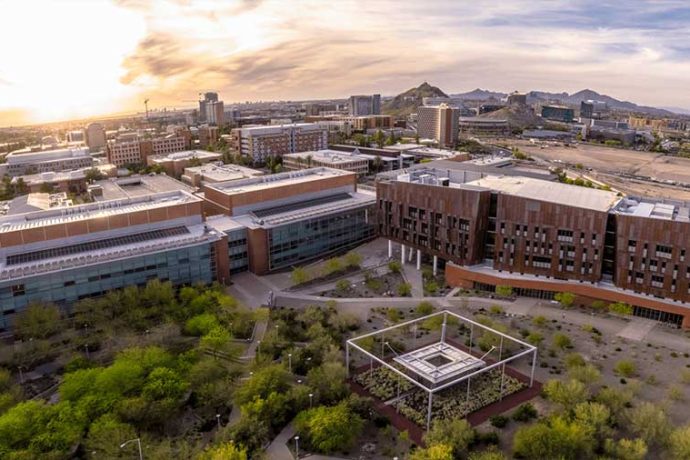- Begin with themes and challenges instead of departments or disciplines. Work with collaborators to help create and sustain transdisciplinary connections.
- Imagine different combinations of existing disciplines, like Oxford did in the 1920s—and ASU and others are doing today.
- Despite the fact that humanities are often under pressure, they can have tremendous impact on students, and they can be applied to current challenges. To do this, faculty must draw on all of the disciplines and be open to how humanistic knowledge can be applied.
- Look to other models, such as humanities labs, for models of how to create co-taught and transdisciplinary courses and how to do research on social challenges in and with surrounding communities.
Arizona State University Culture, Technology, and Environment Major

Fall 2023 began the pilot year of Culture, Technology, and Environment (CTE), a new major offered in the College of Liberal Arts and Sciences at ACLS Consortium Member Arizona State University (ASU). Dean Jeffrey Cohen initially saw the potential for this collaborative curriculum when he looked across campus and saw these common themes emerging from a wide range of majors and classes. As a successful pilot year draws to a close, during which on-campus students enrolled in CTE, the next phase will open up the major to the “digital immersion” students enrolled in ASU Online.
Professor Jonathan Bate took the lead on creating the program. His wide-ranging scholarly expertise and transdisciplinary appointment as the Regents Professor of Literature and Foundation Professor of Environmental Humanities in the College of Global Futures, the School of Sustainability, and the College of Liberal Arts and Sciences positioned him well for this project. He came to ASU from the University of Oxford, the first institution to offer an interdisciplinary degree in the 1920s in Politics, Philosophy and Economics (PPE). At ASU, Bate pitched the new major with the catchy statement, “CTE is the PPE of the 21st century.”
Bate set up a working group across three units—the Department of English; the School of Historical, Philosophical and Religious Studies; and the School of International Letters and Cultures—to think about how to build a new degree without creating a lot of new courses. Bate describes this as a “very collaborative process.” Putting out a call to faculty for existing courses that would count in the new major, for example, yielded productive dialogue about the scope of the major and interesting new possibilities for what could be included. Some of the central questions emerged with time. For example, while it was initially very easy to understand how the themes of culture and environment would work together, Bate was not completely sure how technology would fit. This changed with the advent of ChatGPT. Discussions about artificial intelligence became a core theme: what are the boundaries between human intelligence and AI? Between the human and the non-human? And how do these questions play out in relationship to the environment?
The new major is grounded in two CTE core courses, Introduction to CTE and an upper-level course; a lab course offered through ASU’s Humanities Lab; and a capstone project. All other courses are electives offered across the college. As described in the catalog, the introductory course investigates dominant critical perspectives on culture, technology, and environment (“three of the most fundamental constituents of human civilization”) and considers the varied ways in which they have been “connected throughout human history and, indeed, have shaped the modern, technologized and globalized world in which humans and their nonhuman planet mates live today.” The upper-division course further explores related themes. Students then take a CTE-themed course in the Humanities Lab, which offers co-taught, transdisciplinary labs that focus on collaborative “hands-on research on compelling social challenges.” In their final year, students complete a capstone project, which includes an internship—defined broadly so that online students, many of whom work full-time, will be able to apply what they have learned to their workplace. Both the lab course and the capstone project provide students with opportunities for experiential learning.
During the pilot year, CTE had 5 majors and 11 students in the introductory course; in fall 2024, when the major will become available online, Bate hopes to attract many more majors and nonmajors. He also expects to draw students who decide not to major in the sciences but still have an interest in exploring issues related to science. CTE enables students to think about planetary challenges and issues they care deeply about through a humanistic lens, preparing them for lives as engaged thinkers and contributors to the world around them.

